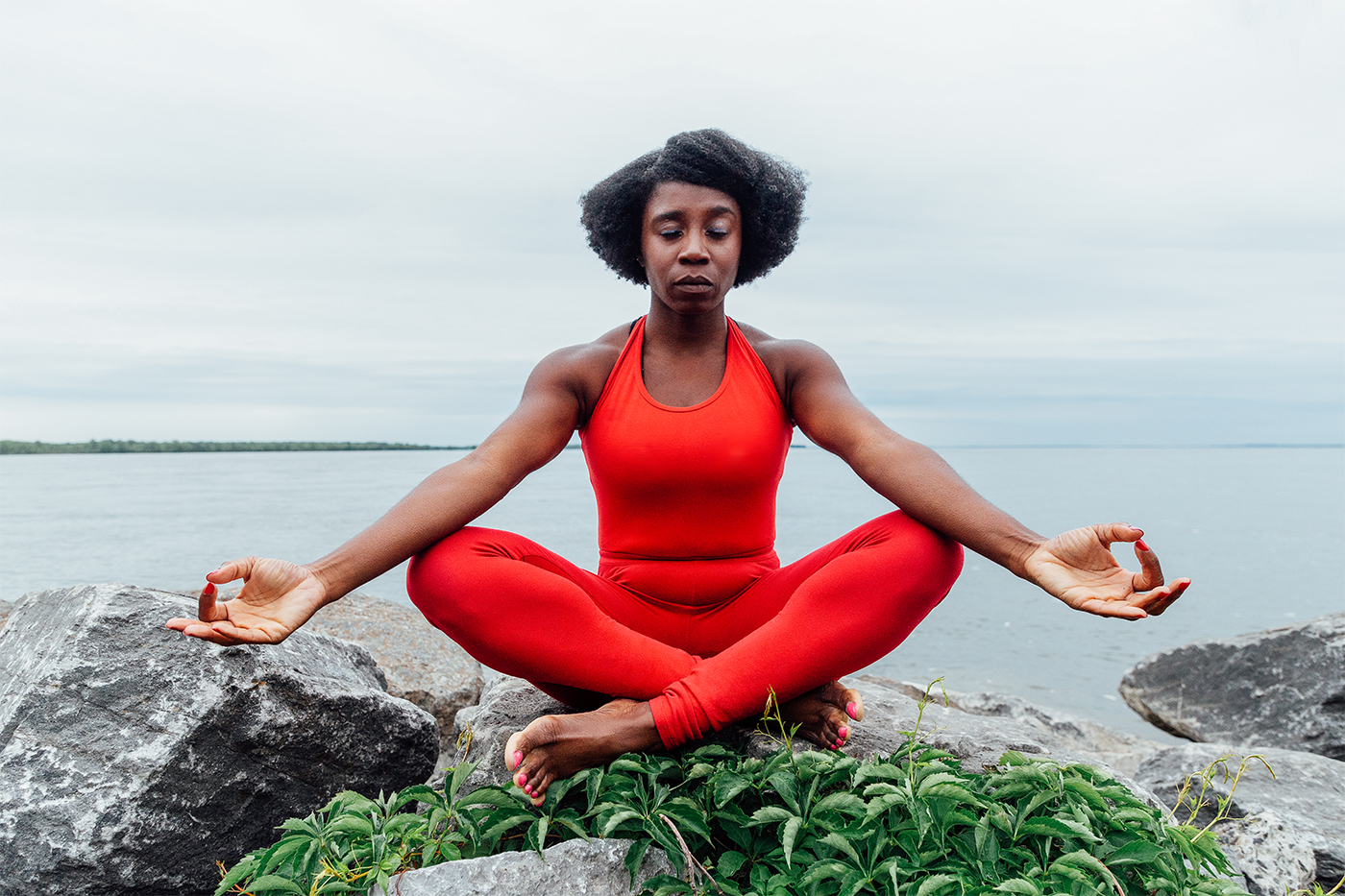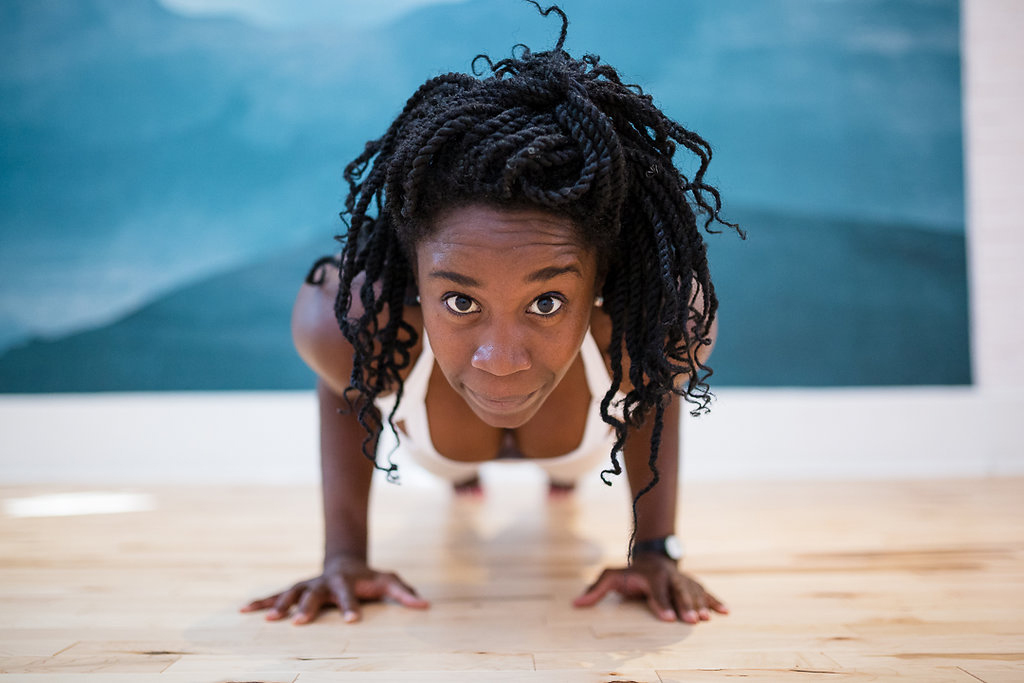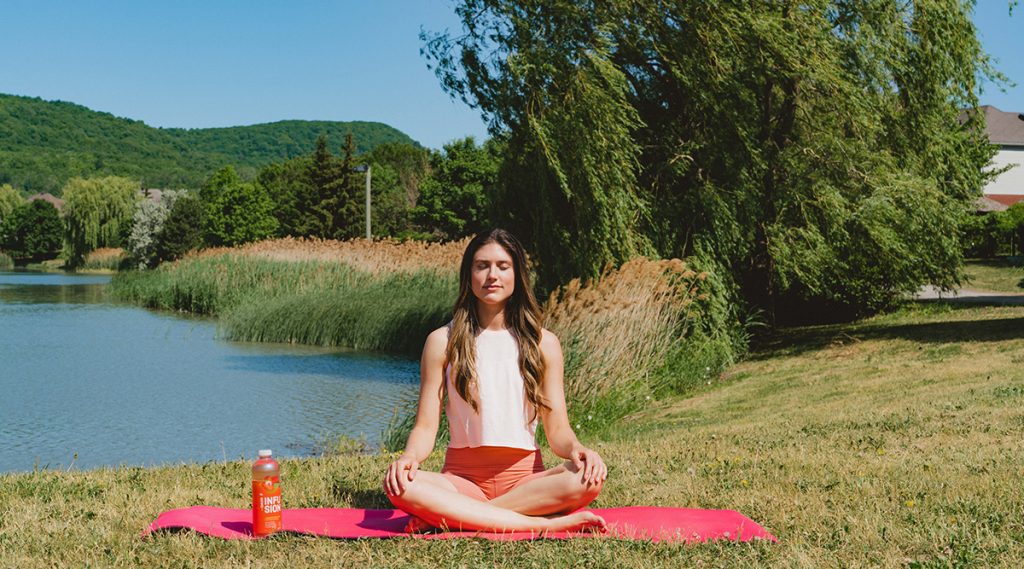
While Eve has been devoting a significant portion of her time to wellness for the past 14 years, teaching yoga and sharing her passion with her community through her blog and social platforms, she is increasingly interested in meditation. She spoke with Nancy Zagabayou, yoga and meditation teacher, and diversity and inclusion consultant in the wellness industry to discuss this. Here’s what they discussed.
What led you to become a yoga teacher and meditation educator?
Back in Law School, I had the opportunity to go on an exchange in Singapore. While I was in Singapore, I visited Indonesia, and I discovered yoga and meditation. My first meditation was a silent retreat in Bali: I arrived at 5 in the morning, at 5:30, we started meditating and everybody was sitting in the Buddha position. At this time, I didn’t know what we were doing, and while everybody had their eyes closed, I had all these thoughts racing through my mind as I was asking myself: “ What am I doing here?”
Since then, I’ve come a long way. I did teacher training in Montreal and India. And even though I have been meditating for many years, I will always remember the first time I threw myself into the lions’ den with a silent 10-day retreat where we spent 10 hours a day meditating. This retreat taught me everything: the right techniques and especially, the right ways to harmonize my personal life with the practice in order to be able to integrate it to my everyday life.
And what kept you curious about meditation?
After this first experience, I read a lot about yoga and meditation’s benefits on our stress management, anxiety, insomnia, and self-esteem. I was craving for peace in my mind, in my body and with the people around me, and that’s exactly what meditation offered me. So I integrated it into my life in a very gradual way, even though my first experience was anything but that. Nevertheless, thanks to it, my curiosity for meditation was born and I wondered if I could one day achieve the peace of mind that the people I meditated with in Bali had. Today, the answer is definitely yes.
Now let’s talk a little more about your practice. Do you have any favourite meditation techniques?
As a teacher, I teach mindfulness-based meditation, but the meditation I practice on a personal basis is Vipassana meditation, a technique that is widely taught and documented around the world. Most people who practice it learn it by participating in a silent retreat, much like I did, but others discover and learn it by listening to the online courses of Satya Narayan Goenka, who was a well-known Burmese-Indian teacher.

What advice would you give to someone who wishes to begin meditation? Where should this person start his/her journey?
I think that the time is always right to start meditating, but I also think that we must make sure that we have a lot of compassion for ourselves before we start. There are so many benefits for body and soul, and we wouldn’t want to miss out on them because we are too demanding on ourselves. I suggest to those who wish to engage in meditation to do so slowly… but constantly. Sitting quietly for five or ten minutes makes a difference when you do it every day, but obviously, the goal is to increase the amount of time you give to the exercise. Oh, and super important tip: people who want to do it at home should make sure they have a quiet place.
We’re all different, and it’s important to understand that. I started very intensely with a ten-hour meditation a day at a silent retreat, but not everyone can start that way, and that’s fine. Again, the key is to listen to ourselves, to understand and respect our limits. So I would say that starting with a 5 to 10 minute meditation as part of your routine, observing what is going on inside and outside of your head and body, and then increasing the time is a good way to start.
Once we sit down, ready to begin the session, are there any steps to follow to make it easier to meditate?
The first step is to sit on something comfortable, keep your spine straight and open your rib cage enough so that you can breathe easily. The second is to close your eyes and try to concentrate on the cold air coming in through your nostrils and the warm air coming out.
Once that’s done, our mind will try to jump from one subject to another. In meditation, we like to compare the mind to the sky and thoughts to the clouds. It is a bit like taking the time to observe the clouds passing through the sky, while continually returning to our breathing to stay in the present moment.
Thank you for those tips. They are very tangible for someone to start and not be scared of this practice. I’m also curious to know how this practice has been impacting your daily life. Have you seen any change?
Definitely! The mind is always trying to jump between the past and the future, and bringing it in the present is an exercise itself. Our mind is also always jumping from what it wants, and what it doesn’t want and bringing it to what it has is also an exercise. By doing this on a regular basis, I’m accepting my present and my situation, and I’m more likely to be contempt. That doesn’t mean I don’t want to change it, but I’m sitting with the comfort and the discomfort. I’m accepting my present, all of it!
Finally, do you have any advice for anyone who would like to begin meditation after reading this article?
It’s important not to have a goal and not to think that meditation will help you with something specific. It’s important to let everything go and just to sit because we don’t know what benefits the practice will bring you, and if you have expectations, you can be disappointed. If you just jump in meditation, you’ll wake up one day, and you’ll notice that it has changed you.

Even If Eve and Nancy are interested in the well-being that comes from meditation, they both agree that taking care of us goes beyond this practice. Learn more about the different ways to commit to your well-being by reading our other articles.
